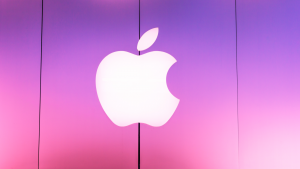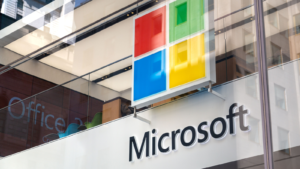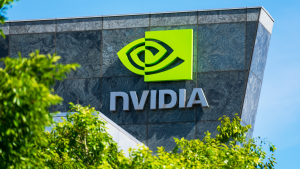Because the S&P 500 is weighted by market capitalization, the bigger a company gets the greater its influence grows. The Magnificent 7 were the largest stocks on the market back then, causing their movements to have an even more profound impact on the index. According to a CNBC analysis, the group of stocks comprising the Magnificent 7 makes up nearly one-third of the S&P 500.
Although the Magnificent 7 stocks are discussed less these days their role in driving the S&P 500 to even greater heights in 2024 is no less impactful. Yet as investors seem to be rotating out of large, tech stocks, they may now have the opposite effect of driving the index lower.
Below are all seven Magnificent 7 stocks rated on performance from worst to best.
Tesla (TSLA)

Electric vehicle giant Tesla (NASDAQ:TSLA) peaked earlier than others in the group. Its stock’s high point was almost exactly one year ago. Since then, Tesla stock has fallen by over 17% €” the only Magnificent 7 stock with a negative return.
It is understandable why. The slowdown in the EV industry gripped even the world’s largest EV stock. The situation has only deteriorated since. In the second quarter, Tesla delivered 440,000 vehicles to buys, 5% lower than the year before. It marks the second consecutive quarter of lower sales, which is the first time that has happened in Tesla’s history.
High interest rates rightly receive much of the blame. As it makes it more expensive to finance the purchase of EVs, which carry higher prices than gas-powered vehicles, it causes a dropoff in sales.
Yet Tesla still beat analyst expectations. To get those higher sales, though, the EV maker not only sparked a price-cutting war in the industry by dropping the price of the Model 3 and Model Y, but it had to offer additional incentives such as better leasing terms.
When or if we see the new, lower-priced $25,000 Tesla remains to be seen, but should it hit the market, it could dramatically alter Tesla’s fortunes.
Apple (AAPL)

Consumer tech giant Apple (NASDAQ:AAPL) is the second worst-performing Magnificent 7 stock. Yet that is a relative term. Compared to Tesla’s performance and that of the S&P 500 as a whole, Apple stock’s 73% gain since the end of 2022 has been nothing short of remarkable.
The iPhone maker enjoyed its largest percentage gain over the first seven months of 2023, rising more than 50%. It then lost 13% of its value through the end of April this year as Wall Street expected its smartphone to run out of steam. Analysts have predicted peak iPhone sales for years.
However, beginning in May when Apple announced it would develop its own AI chip in partnership with Taiwan Semiconductor Manufacturing (NYSE:TSM) for its data centers. Apple stock leapt higher again.
Then in June at its Worldwide Developers Conference, Apple announced OpenAi’s generative AI chatbot Chat GPT will be included across its iOS for mobile, iPads, laptops and Mac computers, the stock took off again. AAPL stock is up 35% since May 1.
Artificial intelligence has been the driving force behind all of the Magnificent 7 and across many other stocks too. However, it has breathed new life into Apple where many were expecting its products to turn stale.
Microsoft (MSFT)

It is much the same story for Microsoft (NASDAQ:MSFT). The technology giant was also at risk of becoming old and tired. Yet well before many other companies grasped the importance of AI, Microsoft latched onto OpenAI’s chatbot and integrated the technology across every product or service it offered. In many ways, Micrsoft is now seen as a leading AI stock.
Shares of MSFT have grown 83% in value since the start of 2023 because of the integration. Although AI didn’t have nearly as big of an impact on its Bing search engine as hoped the embrace of AI was viewed as very forward-thinking. While it reportedly added 40 million new users since the transformation of Bing into Copilot, its market share hasn’t markedly increased.
Instead, the greatest gains are in its cloud services business Azure. Revenue soared 24% over the first nine months of Microsoft’s fiscal 2024 year but rocketed 30% higher in the fiscal third quarter. It indicates AI is helping Azure gain more traction and growth is accelerating.
Alphabet (GOOG,GOOGL)

Alphabet (NASDAQ:GOOG, GOOGL) has its hand in many pies, of course. The revival of digital advertising, though, plays a big part in Alphabet’s gains. Three-quarters of Alphabet’s revenue comes from advertising with the lion’s share derived from Google.
Most of that is related to search but YouTube also brings in significant ad dollars. Google ad revenue jumped 13% last quarter to $61.5 billion, double the rate of growth it enjoyed across all of 2023.
AI is playing a role, too. Alphabet was shockingly slow to adopt AI and then raced to play catch-up. It launched its Gemini chatbot to rival ChatGPT and got off to a rocky start. It subsequently smoothed out all the rough edges of the technology and added enhancements.
As DataCenters.com views it, Gemini 1.5 Flash offers faster processing and greater energy efficiency. Gemini 1.5 Pro offers more power through natural language processing and greater image and recognition, which makes it a better tool in many demanding applications. And Project Astra is what Alphabet sees AI assistants transforming into, intuitive and intelligent while creating more human-like interactions.
Amazon (AMZN)

Even though Amazon (NASDAQ:AMZN) has embraced AI just as much as everyone else, it is not associated as much with the e-commerce giant. That could be because of the subtlety with which it has adopted the technology. It is a more behind-the-scenes integration than outward-facing.
Amazon uses AI to help decide the best packaging for a product, identifying damaged products and produce and assisting with product selection. It also deploys AI and machine learning to improve product recommendations and deploying tools for third-party sellers.
The biggest and arguably best use case for AI is in its cloud services business Amazon Web Services. It allows marketers to write better product descriptions, more effective ads and to create AI-generated images. Amazon is essentially using it to improve its own efficiency while helping others to grow their businesses through AI.
It seems to be paying off. First-quarter AWS revenue grew 17% to $25 billion while operating income rocketed 94% higher to $9.1 billion. AWS has always been Amazon’s profit center but AI could cause its contribution to multiply.
It is showing up in Amazon’s stock performance, too. Shares have more than doubled since the end of 2022, rising 118%. That is good enough for for being the third-best performing Magnificent Seven stock.
Meta Platforms (META)

Meta Platforms (NASDAQ:META) has been a roller coaster ride. Two years ago the owner of Facebook, Instagram and WhatsApp hit lows not seen since 2016 but the revival of the digital ad market was like hitting its stock with defibrillator paddles. META jumped to life and roared nearly 500% higher from that low point.
After falling 1% to $116 billion in 2022, Meta’s ad revenue rebounded sharply last year, rising 15% to $135 billion. It continues to accelerate today, soaring 27% in the first quarter. Meta Platforms is now worth more than $1.2 trillion.
Yet the rotation out of large-cap tech stocks currently underway has META stock turning south again. After hitting an all-time high of almost $543 per share, shares have fallen 12%. It should be temporary. While sector dynamics are working against Meta now, the fundamentals remain intact. There are no signs the ad spend revival isn’t still intact meaning Meta Platforms stock could surprise Wall Street with an earnings beat.
With analysts forecasting less than 15% earnings growth this quarter but expect it to expand profits 30% annually for the next five years, META stock trades at a fraction of that growth rate. That makes Meta Platforms stock an attractive buy.
Nvidia (NVDA)

To no one’s surprise, Nvidia (NASDAQ:NVDA) is the leader of the pack. Its stock is up sevenfold since the start of 2023, tripled last year and more than doubled again over the first seven months of this year. Yet its stock is down 16% from its highs and money starts looking for new channels of growth.
Nvidia is, of course, the face of the AI trade. That shouldn’t change either. The rapid evolution of its AI accelerators is picking up speed and the company expects new versions to come out once a year going forward. The competition can’t keep up. They are still competing against chips that are one or two generations back. Nvidia is introducing next generation chips before it has released the current one and is already talking about what’s coming next year.
The question becomes, is there a limit to the improvements future generations bring to the table or is it technology only a handful of companies can use? Growth seems unimpeded at the moment. So even though NVDA stock goes for a premium even after the pullback, it may be worth buying on the dip.
On the date of publication, Rich Duprey did not hold (either directly or indirectly) any positions in the securities mentioned in this article. The opinions expressed in this article are those of the writer, subject to the InvestorPlace.com Publishing Guidelines.
On the date of publication, the responsible editor did not have (either directly or indirectly) any positions in the securities mentioned in this article.
Rich Duprey has written about stocks and investing for the past 20 years. His articles have appeared on Nasdaq.com, The Motley Fool, and Yahoo! Finance, and he has been referenced by U.S. and international publications, including MarketWatch, Financial Times, Forbes, Fast Company, USA Today, Milwaukee Journal Sentinel, Cheddar News, The Boston Globe, L’Express, and numerous other news outlets.
